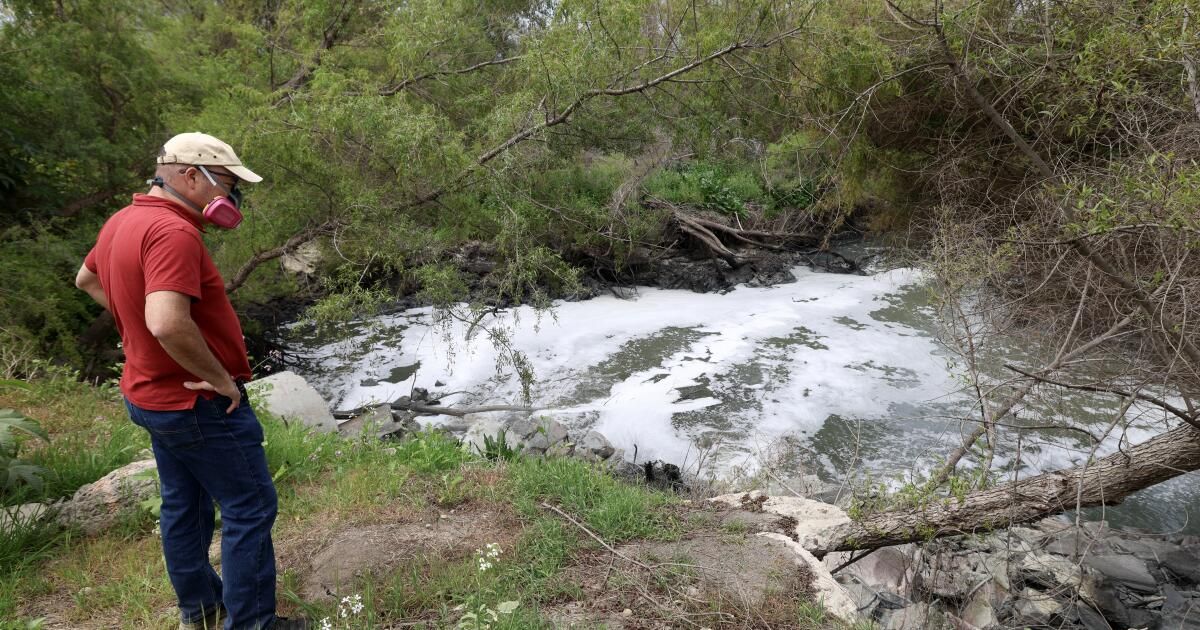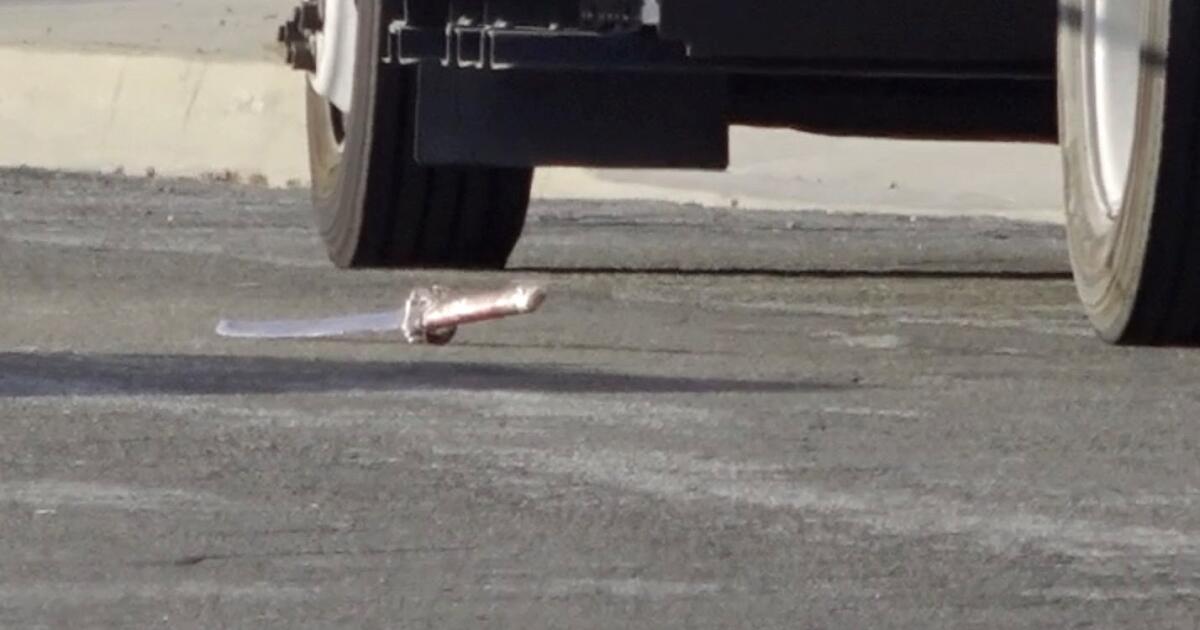The Tijuana River has been plagued with raw wastewater and industrial waste from Tijuana for decades, venturing the beaches along the border between the United States and Mexico with contaminated water and sending foul odors that extend through the communities in San Diego County.
On Wednesday, the American Rivers Environmental Group classified the Tijuana River No. 2 on its annual list of the nation The most endangered riversAbove number 9 on the list last year. The group said that the river raised on the list, just behind the Mississippi River of first classification, to attract more attention to chronic river pollution problems and lack of action to clean it.
Activists with another group, Surfrider Foundation, are also circulating a request Asking that President Trump declare a national emergency to accelerate efforts to curb the non -treated wastewater flow and clean the river.
Kevin Hogan, resident of the Valley of the Tijuana River, explains why the Tijuana River cannot flow due to the excess growth of the vegetation while it is next to Dairy Mart Road in San Diego.
(Hayne Palmour IV/For Times)
“The Tijuana River has gone from being a pollution problem to being a public health crisis. Raising the Tijuana River in our most endangered rivers list reflects that urgency,” said Ann Willis, regional director of California at American Rivers. “What we need urgently is that the Trump administration make a federal emergency statement. This would release funds to address some of the correct problems now.”
The administrator of the EPA, Lee Zeldin, responded to the announcement of the river classification in a statement sent by email, saying that “the raw wastewater that flows from Mexico to the Tijuana River are creating serious and harmful problems for communities with affected river paths.”
“Ensure that the United States waters are clean is part of the central mission of the EPA, and I hope to be on the ground in San Diego in a few days to evaluate the situation and listen directly to those affected,” said Zeldin. “It is the most important to know that as this problem persists, more and more marine stamps remain at risk of disease due to the contaminated river paths in which they train. I firmly believe that the time has come to finish and implement an urgent strategy to finish decades of raw wastewater in the United States,”
In addition to more Funds from the US government to repair and maintain wastewater treatment facilities that are decomposed regularly, environmental groups asked that Mexico take additional measures to set wastewater leaks and make other improvements on their side of the border.
They pointed out that Mexico has progressed in recent years. Tijuana recently Complete construction of a new wastewater treatment plant In the area of San Antonio de los Buenos, a project that is part of a larger infrastructure plan developed by the United States Environmental Protection Agency.
“We need both federal governments to intensify and do more,” said Sarah Davidson, manager of the Clean Border Water Now program of Surfrider. “It will require cooperation through the border. It will require diplomacy and long -term financing of both governments, so it is necessary to find those ways to work with the Mexican government too.”

With a message painted in the road on the road, Derek Spencer, a resident of Tijuana River Valley, which grew in the area, is next to where the Tijuana River flows with foam that forms water next to Saturn Boulevard in San Diego.
(Hayne Palmour IV/For Times)
Willis said that the United States government funds are necessary to fix the international wastewater treatment plant by South Bay north of the border, which manages the wastewater from Tijuana and is in poor condition, as well as measures such as pollution monitoring and health studies in communities near the river.
“The contamination of the Tijuana River is transported not only in the river, but it moves in the air when the river flows to the ocean, and the ocean dew converts pollution into an aerosol,” Willis said. “This is creating a public health crisis, not only for local communities, but also for our military.”

A park test sign in the Tijuana River Valley in San Diego.
(Hayne Palmour IV/For Times)
The environmental group cited a recent Department of Defense Report Showing that around 1,100 cases of diseases between Navy Seal and other service members who were exposed to high levels of bacteria were reported when they trained in and around the ocean near the border.
The Tijuana River flows 120 miles, starting in Baja California and crossing southern California, then reaching the Pacific Ocean on the Imperial Beach. The beaches near the mouth of the river and the drain of the wastewater treatment plant have been closed regularly Due to high levels of bacteria In the ocean.
Residents have also expressed concerns about possible health effects on High levels of hydrogen sulphide and other gases and vapors that emanate from the river.
“This is one of the greatest continuous crises of public health and environmental justice in our country,” said Davidson. “It is similar to other environmental catastrophes, such as the water crisis in Flint, Michigan, and in other places, and we really only need more awareness, more pressure, more prioritization in our federal government to obtain financing on the issue we need for solutions.”
While they held a press conference by the river on Wednesday, Davidson and others used respirators to protect themselves from air pollution.
“It is really affecting all aspects of community life for those communities in and near the Valley of the Tijuana River,” Davidson said. “So it is a fairly desperate situation, and we really only need all the help we can get from all at all levels of government.”












